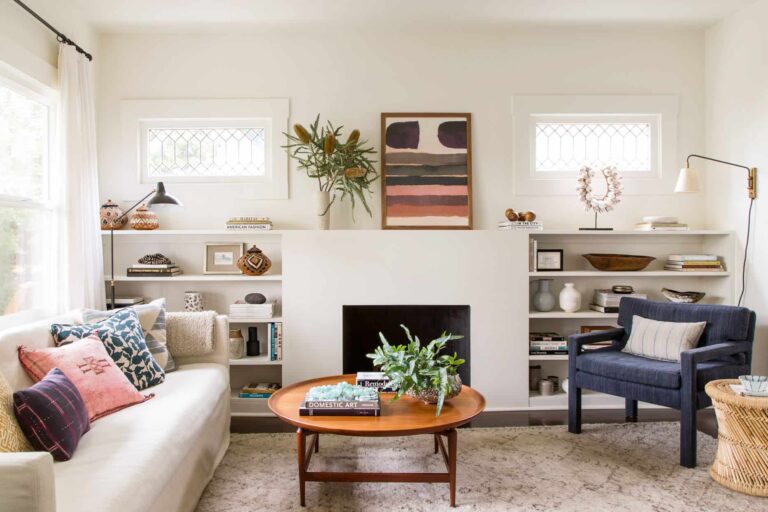Four walls don’t make a home.
A house becomes yours when it wraps you up at the end of a long day. When it holds your laughter. When it knows your secrets.
Most people live in spaces that look nice but miss that special something. That feeling when you walk in and your shoulders instantly drop. That’s what we’re after.
What turns a plain house into your place? Let’s get into it.
9 Everyday Comforts That Make A New House Truly Feel Like Home
Create a Welcoming Entryway
First impressions stick. Your entryway sets the tone for your entire home experience.
Think about what greets you after a rough day. Is it chaos? Clutter? Or a thoughtful space that helps you transition from the outside world to your sanctuary?
A good entryway doesn’t need much. A place to drop your keys. A spot to kick off your shoes. Maybe a mirror for last looks before heading out.
It’s about function meeting feeling. When you walk through your door, it should whisper “welcome back” without saying a word.
Try adding a small bench, hooks at just the right height, or even just a tray for those everyday items that tend to get scattered.
Your entryway says “you’ve arrived” not just to guests, but to you. Make it count.
Layer Soft Textiles
Cold houses stay houses. Homes feel warm.
Textiles turn hard edges soft. They add depth, warmth, and that lived-in feel that makes a space truly yours.
Start with the basics. A rug that feels good underfoot. Sheer Curtains that filter light just right. Pillows that invite you to sink in.
Mix textures for visual interest. Smooth against rough. Shiny against matte. Each layer adds dimension and comfort.
Don’t worry about perfect matching. Real homes have character. That handmade throw from your trip. The mismatched pillows you love. They tell your story better than any designer set ever could.
When in doubt, touch it. If it feels good against your skin, it belongs in your home.
Personalize with Scents
Scent bypasses your thinking brain and goes straight to your emotions.
Maybe it’s fresh coffee on Sunday mornings. Maybe it’s that one candle that reminds you of grandma’s kitchen. Whatever it is, smell anchors you to place like nothing else.
Finding your signature home scent matters. It becomes part of your memory bank. The background note to all your moments at home.
Pick scents that match activities or rooms. Energizing citrus for mornings. Calming lavender for bedrooms. Warm vanilla or cinnamon for gathering spaces.
Recent headlines, such as the Uber sexual assault lawsuit, have drawn attention to the importance of feeling safe in our spaces. Your home should smell like security, like comfort, like you.
Avoid artificial air quality fresheners that smell fake. Go for natural options when possible. Essential oils, simmering herbs, or open windows bring authenticity that plastic scents never will.
Display Personal Memories
Blank walls make blank feelings. Your memories deserve space.
Gallery walls don’t need to be perfect. That crooked photo of your hiking trip. The finger painting your niece made. The weird souvenir you bought on a whim. They’re not just decorations. They’re proof of life being lived.
Group items with meaning. The shells from that beach trip. Tickets from concerts that changed you. Maps of places that matter. Together they tell your story.
Not everything needs to be framed. Sometimes the most meaningful items are three-dimensional. That weird rock you found. The sculpture you bought from a street artist. The heirloom passed down through generations.
When you fill your home with physical reminders of joy, you create a space that feels truly yours. No designer could ever replicate it.
Set Up a Relaxation Nook
Everyone needs a spot that says “come sit here and breathe.”
It doesn’t need to be big. A corner. A window seat. Even just a comfortable chair angled toward something beautiful.
What makes a good relaxation spot? Something soft to sit on. Good light for reading. Maybe a small table for tea or coffee. Privacy from the main traffic areas of your home.
This spot becomes a ritual. The place you naturally gravitate toward when you need to reset. Where you curl up with books or thoughts or nothing at all.
Make it technology-free if possible. We have enough screens demanding our attention. Your relaxation nook should offer something different.
The key is intention. This spot exists for one purpose only: to help you slow down and just be.
Keep the Kitchen Stocked with Comfort Foods
Kitchens feed more than stomachs. They feed souls.
Having your go-to comfort foods on hand creates security. That one snack you reach for when you’re happy. The meal you cook when you need grounding. The special ingredients for celebrations.
Stock basics that make you feel capable. Tea. Coffee. The spices you use most. Ingredients for at least one meal you can make without thinking.
Create a “welcome home” ritual involving food. Maybe it’s making a special drink when you first move in. Or cooking the same meal on your first night in any new place.
What you eat becomes part of how you experience home. There’s a reason certain smells and tastes transport you instantly to childhood kitchens or family gatherings.
Food routines anchor you. Sunday pancakes. Friday pizza. Tuesday tacos. These small traditions create rhythm in a new space.
Add Warm Lighting
Harsh light makes harsh feelings. Warm light creates warm hearts.
Most new houses come with the bare minimum of lighting. Builder-grade fixtures. Overhead lights that flatten everything. They’re functional but soulless.
Start by adding layers. Table lamps. Floor lamps. String lights. Candles. Each source should serve a purpose and create mood.
Lighting should change with the day. Bright and energizing in the morning. Softer as evening approaches. Gentle and warm at night.
Think about what each room is for. Work spaces need directional task lighting. Living areas need ambient light that makes everyone look their best. Bedrooms need options that transition from reading to relaxing.
The right light transforms cheap furniture into cozy vignettes. It makes modest meals feel like dining experiences. It turns ordinary evenings into memory-making moments.
Bring Nature Indoors
We need nature more than we admit. Something alive and growing changes how a space feels.
Start small if you’re nervous. One hardy plant that forgives neglect. A vase of fresh flowers once a month. Branches collected on walks.
Listen to what different spaces need. Bathrooms often love humidity-loving ferns. Kitchens benefit from herbs you can actually use. Living areas might want something architectural that adds height.
Beyond plants, consider natural materials. Wood that shows its grain. Stone with varied texture. Cotton and wool and linen. These elements ground spaces in the real world.
Nature connects us to something bigger than ourselves. It reminds us of cycles and seasons and patience. All good things to have represented in a home.
Establish Daily Routines
New houses feel foreign until you lay down tracks of habit.
Morning routines anchor your day. The path from bed to coffee maker. The favorite mug. The spot where light hits just right for those first quiet moments.
Evening rituals signal your brain to relax. Turning down lights. Locking doors. Setting out what you’ll need tomorrow.
Weekend patterns make a place yours. The special breakfast spot. The cleaning flow. The place you naturally gravitate to for relaxation.
These patterns become invisible over time, but they’re the foundation of feeling at home. They’re how your body learns where it belongs.
Start simple. Just one or two consistent habits that bookend your day. Let the rest develop naturally as you live in the space.
Incorporate Soothing Sounds
Sound shapes mood more than we notice.
What’s your home’s soundtrack? Maybe it’s music that makes you feel like you. Maybe it’s the intentional quiet that gives your mind space to breathe.
Consider the background sounds too. The tick of a clock. The purr of a fan. The gentle chime of bells moved by air. These subtle audio cues become the heartbeat of your home.
Sound can mask too. A water feature covers traffic noise. A radio makes an empty house feel less lonely. Wind chimes connect inside to outside.
Pay attention to jarring sounds. The cabinet that slams. The floorboard that creaks too loudly. The buzzing light fixture. Fixing these small irritations removes daily stress you might not even register consciously.
Your home should sound like comfort. Like safety. Like you.
Conclusion
Home isn’t bought. It’s built. Day by day. Habit by habit. Memory by memory.
The difference between a house and a home design isn’t what you spend. It’s what you notice. What you value. What you create space for.
These everyday comforts aren’t complicated. They don’t require designer budgets or perfect taste. They just ask you to pay attention to what makes you feel good.
Start small. Pick one area that feels most important to you. Focus there. Let the rest come naturally as you live and learn your space.
Remember that real homes aren’t perfect. They’re personal. They change as you do. They hold your story as it unfolds.
What makes your house feel like home? It’s always been you. It always will be.

